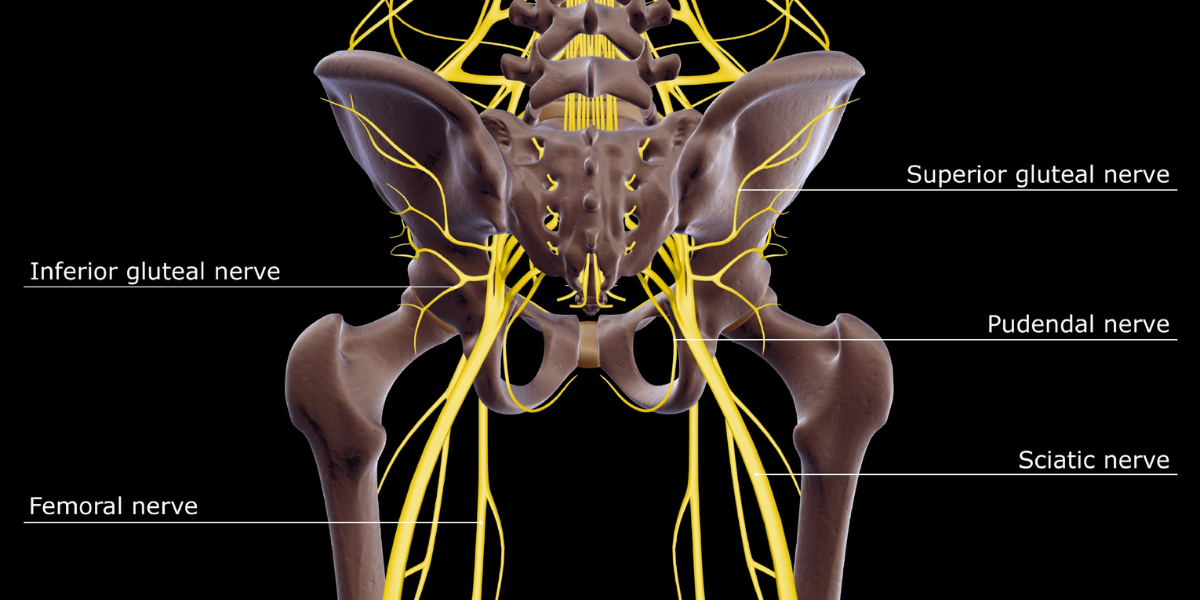Have you ever experienced excruciating back pain that radiates down your leg? If so, you may be suffering from sciatica. Understanding the causes and treatment options for sciatica can help alleviate your pain and improve your quality of life.
In this article, we interviewed Kevin Vuong - director and principal Physiotherapist at Ground Up Physiotherapy. Kevin shares his insights on the intricacies of sciatic nerve pain or sciatica. Through his experience and expertise, we will gain a deeper understanding of the causes, symptoms, and treatment options for sciatica, empowering us to take control of our pain and improve our overall well-being.
Lydia: Let's start with the basics. What exactly is sciatic nerve pain?
Kevin: The sciatic nerve is the body's longest and widest nerve, can cause pain, numbness, and tingling when compressed or irritated. The symptoms of sciatica typically extends from the lower back through the buttocks and down the back of the legs.
Lydia: What are the signs and symptoms of sciatica?
Kevin: One of the defining symptoms of sciatic nerve pain is a searing, shooting pain that emanates from the lower back, traveling down one or both legs. The intensity of this pain can vary, manifesting in the buttocks, thigh, calf, or even extending to the foot.
In addition to sharp pain, individuals with sciatic nerve pain commonly report experiencing numbness and tingling sensations in the affected leg or foot. These sensations can lead to a sense of leg weakness, making routine activities more challenging.
The impact on muscle strength is another facet of sciatica, contributing to weakness in the affected leg. This muscular weakness can significantly impede standing, walking, and lifting objects, ultimately altering one's gait and posture.
Sciatic pain is known to exacerbate under certain circumstances. For instance, sitting, coughing, sneezing, or sudden movements may intensify the pain. Prolonged periods of standing or walking can also contribute to increased discomfort.
While the pain typically radiates down the leg, it frequently originates in the lower back. As a result, persistent lower back discomfort often accompanies the leg pain experienced by many individuals dealing with sciatic nerve issues. These varied symptoms collectively underscore the multifaceted and sometimes debilitating nature of sciatic nerve pain.
Lydia:Lydia: What are the common causes of sciatic nerve pain?
Kevin: Identifying the underlying causes of sciatic nerve pain is essential for devising effective treatment plans. Some contributing factors include:
- Herniated Disc: When a disc in the lumbar spine herniates or bulges, it can exert pressure on the sciatic nerve, leading to pain and discomfort.
- Spinal Stenosis: The narrowing of the spinal canal can place pressure on the sciatic nerve, resulting in pain and related symptoms.
- Spondylolisthesis: This condition arises when one vertebra slips forward over another, potentially pinching the sciatic nerve and causing pain.
- Piriformis Syndrome: The piriformis muscle, located in the buttocks, can irritate or compress the sciatic nerve, resulting in pain.
- Trauma or Injury: Accidents, falls, or sports-related injuries have the potential to cause damage to the sciatic nerve or the surrounding structures, thereby triggering sciatica.
Understanding these common causes is crucial for tailoring effective interventions and providing relief to individuals dealing with sciatic nerve pain.
Lydia: Diagnosing the condition is crucial. How do you diagnose sciatica?
Kevin: Seeking professional evaluation is key for correct diagnosis of sciatica. A physiotherapist or healthcare provider would assess your medical history, conduct a physical examination, and may order imaging tests like X-rays, MRI, or CT scans.
Lydia: Now, onto treatment for sciatica. What approaches can help manage the pain?
Kevin: The management of sciatica may include any or a combination of:
- Physiotherapy: Often the initial approach for addressing sciatica, physiotherapy offers a tailored exercise regimen to enhance flexibility, strengthen core and back muscles, and alleviate pressure on the sciatic nerve. Physical therapy, massage therapy, stretching, and posture correction techniques may also be incorporated.
- Medications: Management of pain and inflammation can be achieved with over-the-counter pain relievers like ibuprofen or prescription medications such as muscle relaxants and anti-inflammatories however, please seek your Doctor’s recommendation.
-
Heat and cold therapy: Application of heat or cold therapy to the affected area proves effective in reducing pain and inflammation. Contrast therapy- alternating between heat pack and cold pack for back pain can enhance the therapeutic benefits.
- Epidural Steroid Injections: Corticosteroid injections directly into the affected area may provide temporary relief by diminishing inflammation and alleviating pain.
- Lifestyle Modifications: Adopting positive lifestyle changes, including maintaining good posture, avoiding prolonged sitting, and employing proper body mechanics, can help prevent future occurrences of sciatic nerve pain.
- Surgery for sciatica: When conservative treatments fall short or in cases of severe nerve compression, surgery becomes a consideration. Procedures like discectomy or laminectomy may be performed to alleviate pressure on the sciatic nerve, aiming for long-term relief.
Lydia: Prevention is always crucial. Any tips to prevent sciatic nerve pain?
Kevin: Absolutely. Regular exercise, proper lifting techniques, maintaining healthy posture, and ensuring an ergonomically designed workspace can significantly reduce the risk of sciatica.
Final thoughts
Sciatic nerve pain can indeed be debilitating, but with the right approach, it is manageable and one can make a full return to usual activities. If you suspect sciatica, consult a health care provider for a proper diagnosis and treatment plan. Remember, addressing the root causes and staying consistent with treatment is key to a successful recovery.
For effective relief sciatica pain, check out our reusable heat and cold packs for back pain. We have a back and hip specific design for all musculoskeletal injuries to back and hip regions.

















Leave a comment
All comments are moderated before being published.
This site is protected by hCaptcha and the hCaptcha Privacy Policy and Terms of Service apply.